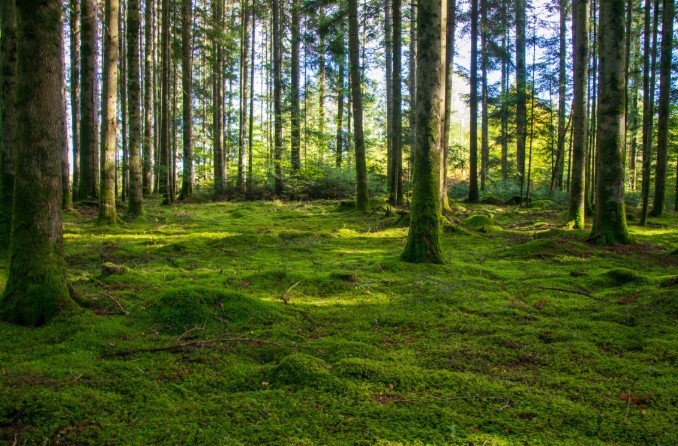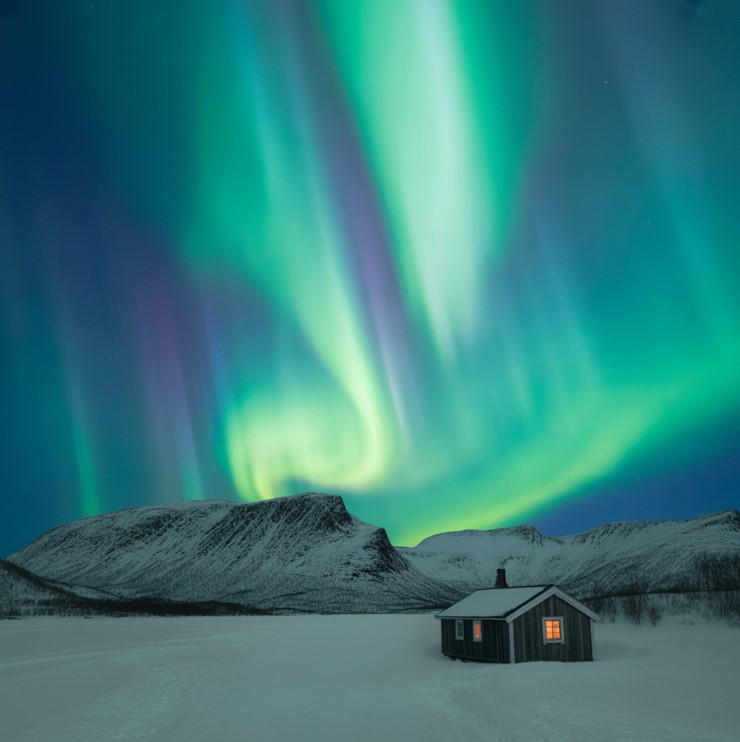Contents
This article explains the three main types of forests—boreal, temperate, and tropical—detailing their unique climates, species, and global significance. These vast ecosystems are critical to the planet’s health, housing the majority of terrestrial biodiversity and playing a key role in regulating the global climate.
The world’s forests are categorized into three major types based on their latitudinal location. The three main types of forests are boreal, temperate, and tropical. Global factors like climate, latitude, and altitude shape these forest ecosystems. The specific combination of temperature and precipitation primarily determines each of the types of forest.
Climatic Conditions by Forest Type
The climate is the most significant factor defining each forest biome. The following table compares the general climatic conditions for each of the three major forest types.
| Forest Type | Average Temperature | Annual Precipitation | Key Climatic Features |
|---|---|---|---|
| Boreal | -5°C to 5°C (23°F to 41°F) | 40-100 cm (15-40 in) | Long, cold winters; short, cool summers; low evaporation. |
| Temperate | 6°C to 20°C (43°F to 68°F) | 60-220 cm (24-87 in) | Four distinct seasons; moderate temperatures; consistent moisture. |
| Tropical | 20°C to 25°C (68°F to 77°F) | >200 cm (>80 in) | Consistently high temperatures and humidity; high rainfall year-round. |
Human-Forest Interaction
Forests support human populations by providing essential resources, including timber, food, and medicinal compounds. They also perform vital ecosystem services like water purification and carbon sequestration. However, activities such as agriculture, logging, and urbanization threaten forests around the world, leading to deforestation and habitat loss.
What Is a Forest?
Defining a forest is a complex task that involves specific criteria related to land area, tree height, and canopy cover.
The FAO Definition
The Food and Agriculture Organization (FAO) of the United Nations provides a widely used definition. The FAO defines a forest as land spanning more than 0.5 hectares with trees higher than 5 meters and a canopy cover of more than 10 percent. The minimum area for a region to be considered a forest by the FAO is 0.5 hectares. The tree height requirement is a minimum of 5 meters, and the canopy cover must exceed 10 percent for an area to be classified as a forest by the FAO.
Controversy Over the Definition
The definition of a forest is not universally agreed upon. One significant issue with the FAO’s definition is that it includes monoculture tree plantations, which lack the biodiversity of natural forests. Because the current forest definition can group natural ecosystems with commercial plantations, it can make it difficult to monitor true changes in global forest health and biodiversity.
III. Boreal Forests (Taiga)
Boreal forests, also known as taiga, form a continuous belt across the northern regions of the globe.
General Characteristics
Boreal forests are found in the high northern latitudes, spanning across North America, Europe, and Asia. Glacial activity during the last ice age shaped the land beneath these forests, leaving behind thin soils and numerous lakes. The harsh climate of boreal forests limits their species diversity compared to other forest types. Boreal forests are important stores of carbon, holding vast amounts in their soil, peatlands, and permafrost.
Flora and Soil
The growing season in boreal forests is short, typically lasting only 50 to 100 days. Soil conditions in boreal forests are generally acidic, low in nutrients, and often waterlogged due to low evaporation rates. The most abundant type of tree in these forests is the conifer.
Prominent tree species in boreal forests include:
- Pine (Pinus)
- Spruce (Picea)
- Fir (Abies)
- Larch (Larix)
Mosses, lichens, and low-lying shrubs grow in the understory of boreal forests.
Fauna and Adaptation
Organisms survive in boreal forests through various adaptations, such as thick fur, hibernation, and migration. Boreal caribou survive year-round in the taiga by migrating across large territories and feeding on ground and tree lichens during winter. Boreal caribou are at risk of extinction due to habitat fragmentation from industrial development and increased predation. Many bird species, such as warblers and thrushes, use boreal forests as breeding grounds during the summer before migrating south for the winter.
Threats and Conservation
Climate change is a major threat to boreal forests. Approximately 30-35% of boreal forests are on top of permafrost, a layer of permanently frozen ground. Climate change causes this permafrost to thaw, which destabilizes the ground and can cause trees to fall, creating “drunken forests.” Because they store immense amounts of carbon, boreal forest conservation is considered critically important for regulating the global climate.
Types of Boreal Forest
- Open Canopy Boreal Forests: These forests, also known as lichen woodlands, have sparse tree cover, allowing sunlight to reach the ground and support a dense mat of lichens. They are typically found in the far north.
- Closed Canopy Boreal Forests: These forests have a dense tree canopy that blocks most sunlight from reaching the forest floor, resulting in an understory dominated by mosses and shade-tolerant shrubs.
Temperate Forests
Temperate forests are located in the mid-latitudes between the tropics and the boreal regions.
General Characteristics
Temperate forests are located in eastern North America, Western Europe, and East Asia. Secondary forests, which have regrown after major disturbances like logging or agriculture, dominate the temperate zone. Temperate forests make up approximately 16% of the Earth’s total forest cover.
Flora, Fauna, and Seasonal Adaptations
Deciduous trees in temperate forests adapt to seasonality by shedding their leaves in the fall to conserve water and energy during the cold winter. Animals in temperate forests cope with winter through strategies like hibernation (e.g., bears), migration (e.g., birds), or growing thicker fur (e.g., deer).
Climate and Soil
The annual temperature range in temperate forests is wide, with cold winters and warm summers. These forests receive between 60 and 220 cm of rain per year, distributed evenly. Soil conditions in temperate forests are typically very fertile due to the decomposition of fallen leaves each year, which enriches the topsoil with nutrients.
Endangered Species
In the U.S., 26 endangered mammal species live in temperate forests. The Amur leopard, found in the temperate forests of the Russian Far East, is an example of a critically endangered species, with fewer than 100 individuals remaining in the wild. The conservation status of the northern spotted owl is listed as “Threatened” under the Endangered Species Act. The northern spotted owl prefers old-growth temperate forests with complex, multi-layered canopies for nesting and foraging.
Types of Temperate Forest
- Temperate Deciduous Forest: Characterized by broadleaf trees that lose their leaves annually.
- Temperate Coniferous Forest: Dominated by evergreen conifers like pine and fir, often found in coastal areas or mountains.
- Temperate Rainforest: Features high rainfall and mild temperatures, supporting massive trees like redwoods and a lush undergrowth of mosses and ferns.
Tropical Forests
Tropical forests are found near the equator and are known for their extraordinary biodiversity.
General Characteristics
Tropical forests are located in the equatorial zone between the Tropic of Cancer and the Tropic of Capricorn. Tropical forests cover about 7% of the planet’s surface but harbor more than 50% of all terrestrial plant and animal species. These vital ecosystems are highly threatened by human activities.
Climate and Biodiversity
Temperature and rainfall conditions in tropical forests are consistently high, with average temperatures around 20-25°C and annual rainfall exceeding 200 cm. The Amazon rainforest alone is estimated to contain 10% of the world’s described species.
Soil and Plant Adaptation
Tropical forests are highly efficient at processing nutrients; decomposition happens very rapidly. Contrary to what their lush growth might suggest, tropical forest soils are generally nutrient-poor because nutrients are quickly absorbed by plants rather than stored in the soil. Many tropical trees have adapted to nutrient-poor soils by developing shallow roots or buttress roots for support.
Fauna and Endangered Species
The Sumatran orangutan is a critically endangered species in tropical forests, primarily due to habitat loss from the expansion of palm oil plantations. Most of the world’s non-human primates live in tropical forests. In some Brazilian forests, as many as 14 different kinds of primates can live in the same area, each occupying a different niche.
Human Threats
Human activities that threaten tropical forests include:
- Conversion of land for agriculture (e.g., cattle ranching, soy, palm oil)
- Commercial logging
- Mining and infrastructure development
- Climate change-induced droughts and fires
According to monitoring data, approximately 3.7 million hectares of primary tropical forest were lost in 2023.
Types of Tropical Forest
- Evergreen Rainforest: Receives high rainfall (>200 cm) year-round, characterized by a dense, multi-layered canopy and immense biodiversity.
- Tropical Moist Forest: Experiences a short dry season but receives enough rainfall to support mostly evergreen trees.
- Tropical Dry Forest: Has a prolonged dry season, during which most trees shed their leaves to conserve water.
- Mangrove Forest: A coastal forest type found in intertidal zones, characterized by salt-tolerant trees (mangroves) that protect coastlines. Mangrove forests serve as critical nursery grounds for marine life and protect coastal communities from storm surges.
Frequently Asked Questions (FAQ)
Q1: What are the three main types of forests?
A1: The three primary types of forests are boreal (taiga), temperate, and tropical. They are classified based on their latitude and climate.
Q2: Why are tropical forest soils so poor in nutrients?
A2: Tropical forest soils are nutrient-poor because the warm, wet conditions lead to rapid decomposition and immediate uptake of nutrients by the dense vegetation. Nutrients are stored in the plants themselves, not in the soil.
Q3: What is the biggest threat to boreal forests?
A3: The biggest threat to boreal forests is climate change, which causes permafrost to thaw. This process releases large amounts of stored carbon and methane, destabilizes the ground, and disrupts the entire ecosystem.
Q4: How do trees in temperate forests survive the winter?
A4: Deciduous trees in temperate forests survive winter by shedding their leaves to reduce water loss and entering a dormant state. Coniferous trees have needle-like leaves with a waxy coating that minimizes water loss, allowing them to stay green year-round.
Related Video Resource
For a visual overview of these ecosystems, watch this educational video from National Geographic:





